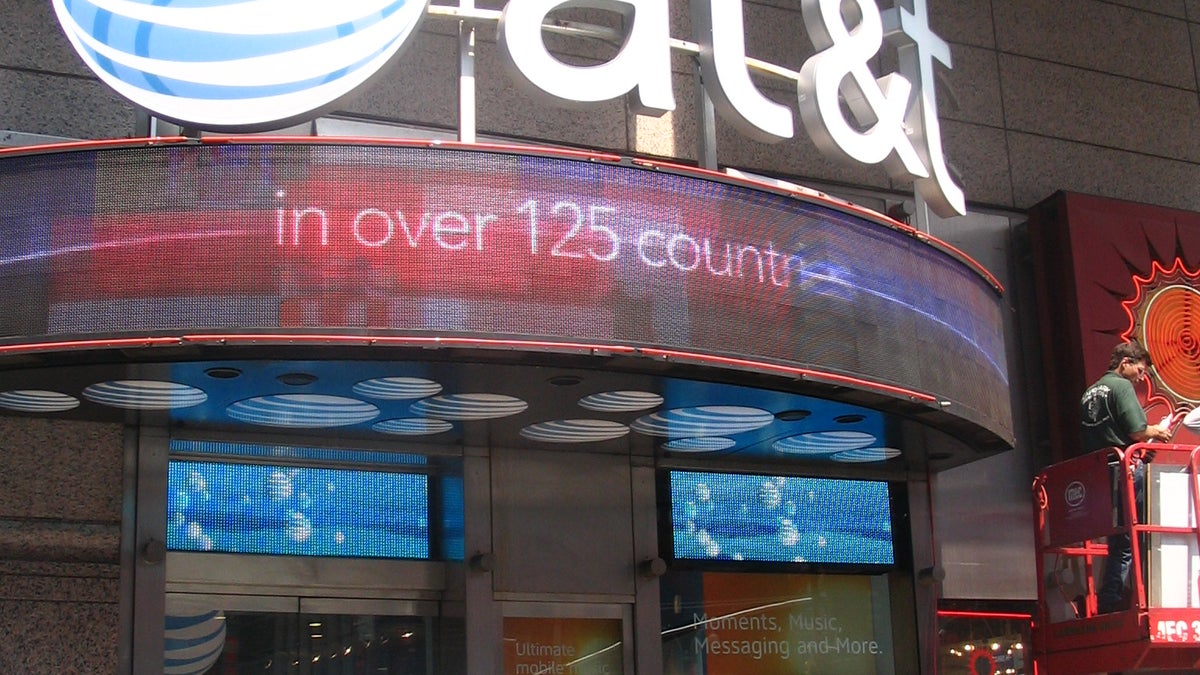AT&T reports initial iPhone subscriber numbers
AT&T said it signed up 146,000 iPhone subscribers in the first two days of selling the iPhone, but the true promise of the iPhone won't likely kick in until next year.

AT&T said it that it signed up 146,000 new subscribers in the first two days it offered the iPhone, slightly down from some Wall Street expectations, but the promise of iPhone madness is still alive.
Wall Street analysts had predicted that AT&T would activate 200,000 iPhones in June, but the actual number reported on Tuesday when AT&T discussed second quarter results fell short of this goal. The iPhone, which is only being sold through AT&T, went on sale June 29th. AT&T's second quarter officially ended June 30th.
While sales may not have been as strong as some predicted, AT&T did say that about 40 percent of subscribers who bought an iPhone were new customers to AT&T. AT&T executives also said on the call earlier today that sales of the iPhone "continue to be strong in July with store traffic above historical levels."
This is great news for AT&T. The iPhone seems to be living up to its intended purpose of attracting new customers to AT&T. On the flip-side, AT&T's success at attracting new customers is likely bad news for competitors, such as Sprint Nextel, T-Mobile and Verizon Wireless.
In total, AT&T said its wireless division added 1.5 million subscribers during the quarter, down about 2.8 percent from the previous year and up from 1.2 million new subscribers in the first quarter. As of June 30, the company had a total of 63.7 million subscribers.
My guess is that the sales of the iPhone will grow steadily over the next couple of quarters. But the real value for AT&T in this five-year exclusive deal with Apple will be seen next year and the year after as Apple introduces new versions of the product.
There's little doubt in my mind that the iPhone is a game-changing device. Its interface is sleeker and more intuitive than any other smart phone I've ever seen. In fact, I think the iPhone does exactly what I've been telling handset makers and cell phone operators that a mobile Internet phone should do. "Don't make the 'mobile Internet' look different on my phone than it does on my PC," I say. "I want the same experience; the same look and feel; the same ease of use."
Most mobile cell phone executives I say this to are quick to tell me that it's technically impossible to shrink the Web experience onto such a tiny screen. Or they say that people don't want to do the same things on an Internet-enabled phone as they do on their PC. But I think the iPhone comes the closest to achieving my ideal mobile Web surfing experience. And if it's a big success, I think the rest of the pack will follow, trying to imitate what Apple has already achieved.
But the real key to making the iPhone more appealing to consumers, especially frugal consumers such as myself, is to get it on a faster 3G network. I can't see any reason to spend $600 on a phone that downloads Web pages at a snail's pace. And it's also very likely that Apple will follow the same strategy it has for the iPod, by introducing several different versions of the product to accommodate a variety of price points.
In fact, Gene Munster, an analyst at Piper Jaffray said in a research note published Tuesday that he expects 45 million iPhones to ship in 2009. At that point he expects Apple to have two to three different iPhone models.
In a side note, AT&T's earnings weren't all about the promise of the iPhone. The company, which merged with BellSouth last year, reported strong earnings and subscriber growth across the board. Wireless was clearly the highlight of AT&T's second quarter with mobile data kicking in some high growth. Revenue from data services, which includes mobile Web surfing and e-mailing, rose 67 percent to $1.7 billion. And the company's average revenue per user or ARPU was up 3.6 percent to $50.63.
The company's DSL business didn't do too shabby either. AT&T added 361,000 new subscribers during the second quarter, a jump of 5.6 percent from the previous year. The company also said it had 200,000 video subscribers at the end of the quarter, a huge leap from the previous year when AT&T had barely rolled out TV service.
In total, AT&T posted net income of $2.9 billion, or 47 cents a share, compared with $1.81 billion, or 46 cents a share, a year earlier. Of course, a year ago, AT&T wasn't counting earnings from BellSouth, but still analysts were impressed with the company's overall growth.

